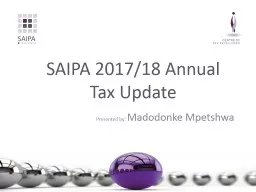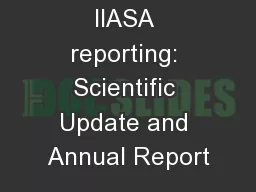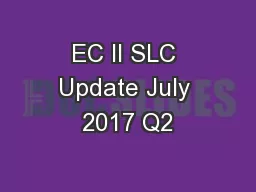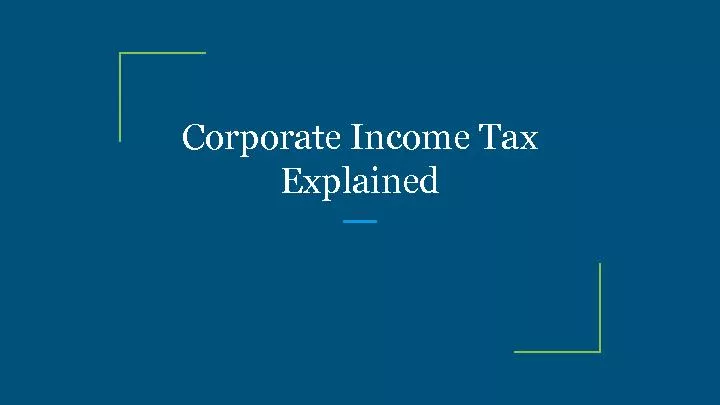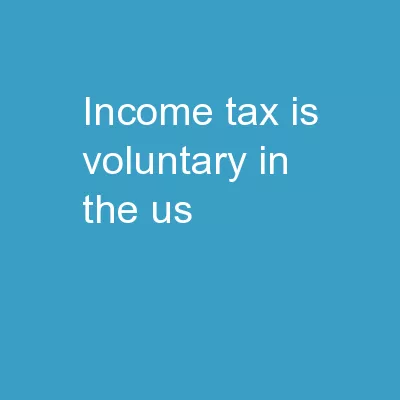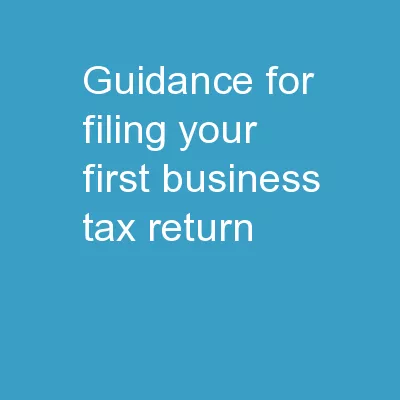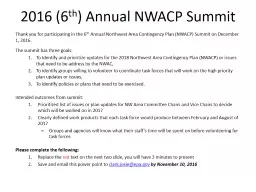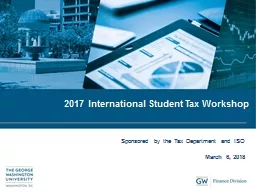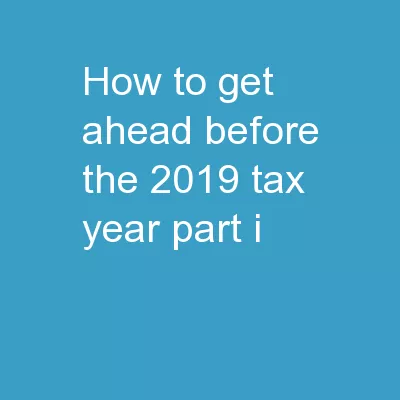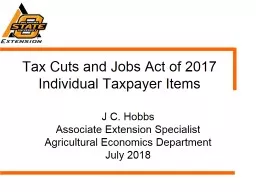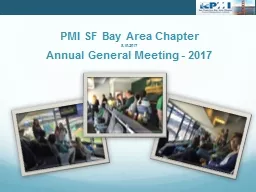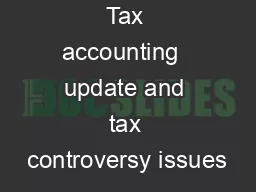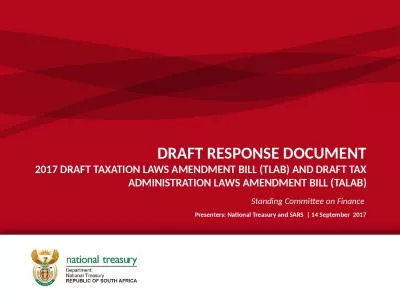PPT-SAIPA 2017/18 Annual Tax Update
Author : briana-ranney | Published Date : 2019-12-27
SAIPA 201718 Annual Tax Update Presented by Madodonke Mpetshwa Agenda Introduction Highlights of the Budget Changes to the Act Individuals Companies Employment Tax
Presentation Embed Code
Download Presentation
Download Presentation The PPT/PDF document "SAIPA 2017/18 Annual Tax Update" is the property of its rightful owner. Permission is granted to download and print the materials on this website for personal, non-commercial use only, and to display it on your personal computer provided you do not modify the materials and that you retain all copyright notices contained in the materials. By downloading content from our website, you accept the terms of this agreement.
SAIPA 2017/18 Annual Tax Update: Transcript
Download Rules Of Document
"SAIPA 2017/18 Annual Tax Update"The content belongs to its owner. You may download and print it for personal use, without modification, and keep all copyright notices. By downloading, you agree to these terms.
Related Documents

